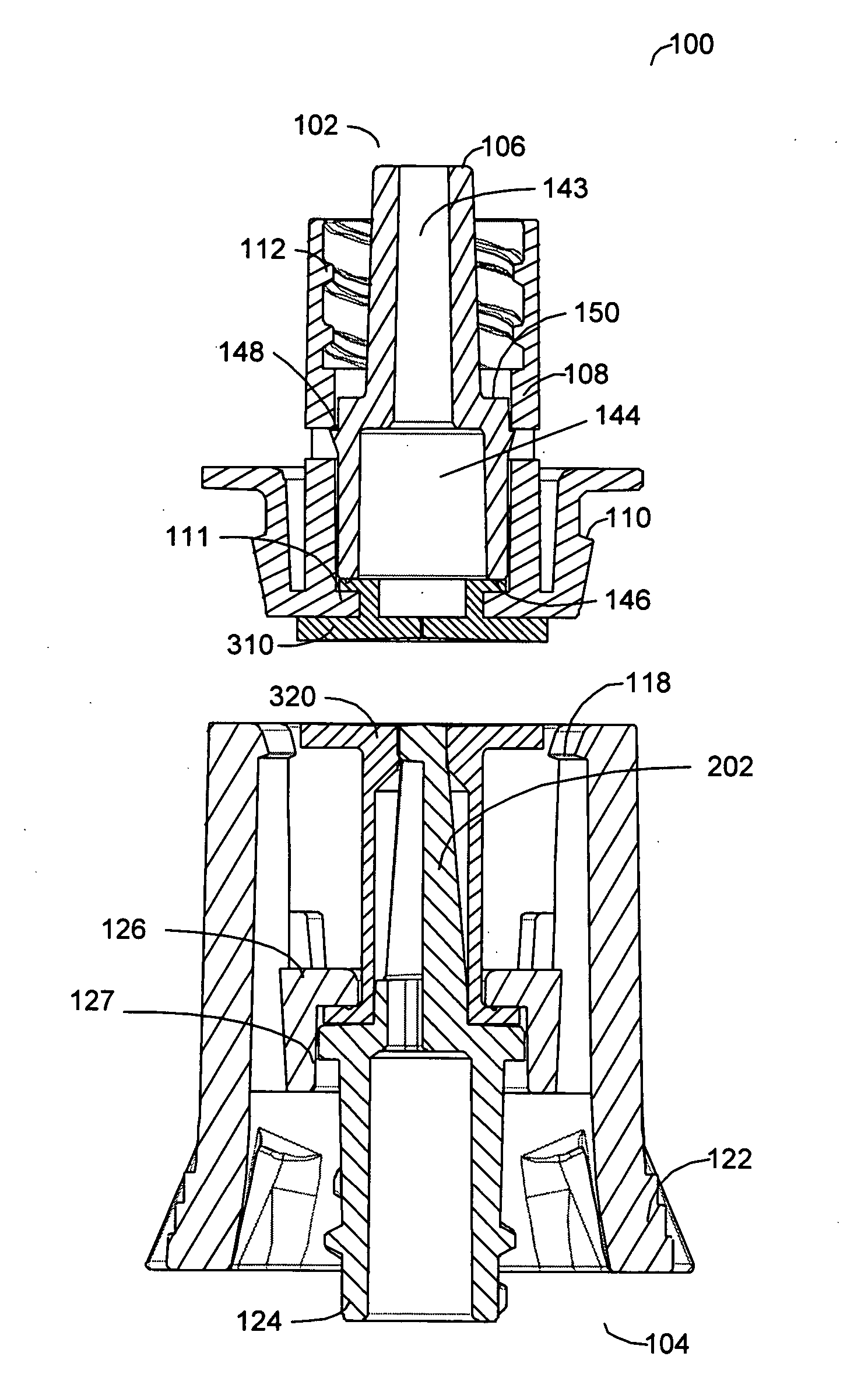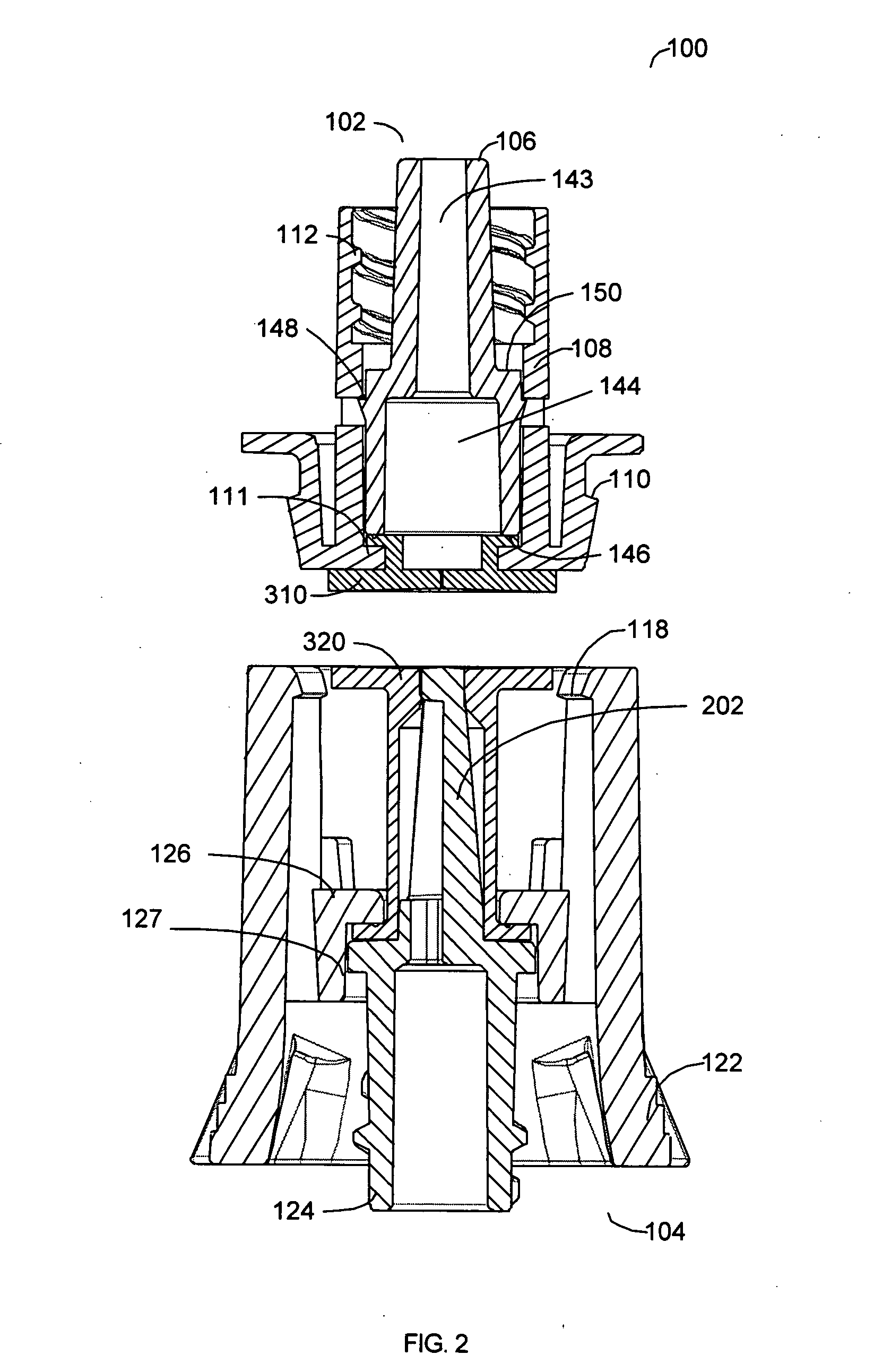Reconnectable disconnect device for fluid transfer line
a disconnect device and fluid transfer technology, applied in the direction of intravenous devices, valves, etc., can solve the problems of increased pain for patients, difficult to remove and replace, and difficulty in adding sticks, so as to prevent patient injury, prevent patient injury, and simple and inexpensive manufacturing and assembly
- Summary
- Abstract
- Description
- Claims
- Application Information
AI Technical Summary
Benefits of technology
Problems solved by technology
Method used
Image
Examples
Embodiment Construction
[0042] A preferred embodiment of this invention provides a novel apparatus allowing an IV tube or other medical tubing device to be either manually disconnected or to automatically disconnect at a force sufficiently low to prevent patient injury and then to be reattached without necessitating another needle stick or medical procedure or the need to replace the device.
[0043] In accordance with one aspect of a preferred embodiment of the present invention, the design of the apparatus allows fluid flow across a fluid delivery tubing device to be quickly disconnected without significant leakage of fluid.
[0044] In accordance with another aspect of a preferred embodiment of the present invention, the design of the apparatus allows fluid flow across a fluid delivery tubing device to be automatically disconnected if a force above a certain threshold is applied to the apparatus itself or to the fluid delivery line.
[0045] In accordance with another aspect of a preferred embodiment of the p...
PUM
 Login to View More
Login to View More Abstract
Description
Claims
Application Information
 Login to View More
Login to View More - R&D
- Intellectual Property
- Life Sciences
- Materials
- Tech Scout
- Unparalleled Data Quality
- Higher Quality Content
- 60% Fewer Hallucinations
Browse by: Latest US Patents, China's latest patents, Technical Efficacy Thesaurus, Application Domain, Technology Topic, Popular Technical Reports.
© 2025 PatSnap. All rights reserved.Legal|Privacy policy|Modern Slavery Act Transparency Statement|Sitemap|About US| Contact US: help@patsnap.com



